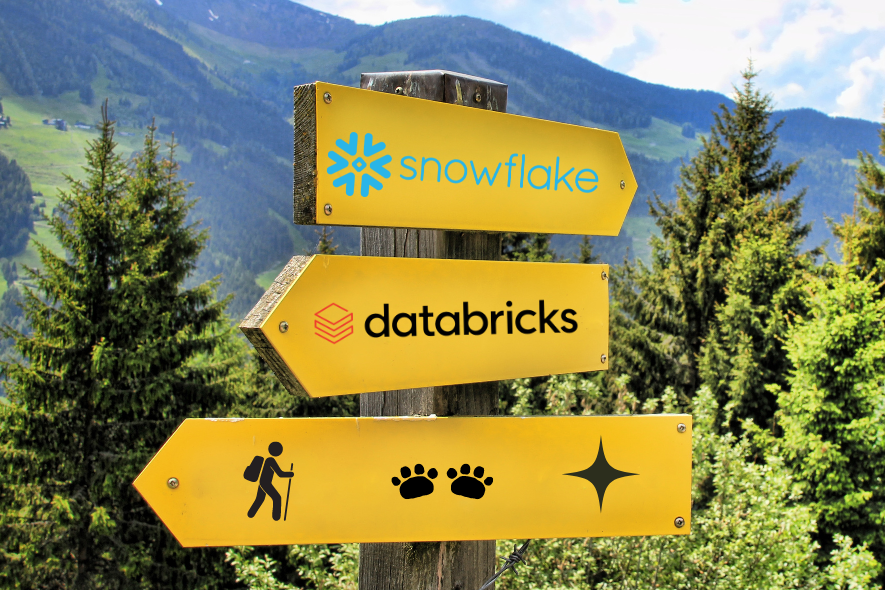Marketers have long been looking for ways to leverage data to better understand their customers. And many think that a customer data platform (CDP) might be the solution to their problems. CDPs promise to deliver two things that marketers always wanted: complete customer data and a way to feed that data into their MarTech tools to create effective campaigns.
Unfortunately, CDPs also come with a number of drawbacks: a high price tag, data held hostage, limited customization, and inability to scale, to name a few.
But here’s the good news:
If your organization has a cloud data warehouse, you already have 90% of a CDP. You can save time and costs by getting the remaining 10% of functionality from an activation tool instead of an expensive, out-of-the-box CDP.
Allow me to use an analogy to illustrate…
Do you like piña coladas?
Imagine it’s the 1980’s. Great hits like “Escape (The Piña Colada Song)” are coursing through radio waves. Every DJ is playing it and everyone in their car is singing to it. Everyone, except you.
Your red Porsche is wonderful, but it didn’t come with a radio. You bought your car for its performance, but now you’re missing the tunes. All you can do is longingly watch your friends lip sync about getting caught in the rain while you sit in silence.
You want to hear the music. What do you do?
- A: Buy a radio and install it in your fast car.
- B: Buy a slow car that has a radio.
The option is obvious. You already have a fantastic car, so you go with option A. You install a new, state-of-the-art radio and: boom! You have both a wonderful car AND an amazing sound system. Now you’re singing in hi-fidelity to lyrics of attempted infidelity. Congrats!
Tuning in to Your Customer Data
Let’s come back to the present. Your organization knows it’s missing out on the sweet music of trustworthy, consolidated customer data. You see your peers collecting and consolidating internal data and activating it across marketing channels, and you want to do it too.
But instead of buying and installing the one tool you need to do that, your organization is considering buying a suite of unnecessary tools that happens to include the one they need. In other words, your company is thinking of buying an out-of-the-box CDP.
My goal with this article is to convince you that your company already has a fast car (your data warehouse) and you only need to install a radio (an activation tool) to hear the music (unified and activated customer data).
We will cover:
- What is a CDP and what does it do?
- Functional overlaps between a cloud data warehouse and a CDP
- How to get the remaining functionality from an activation tool
- Why an activation tool is a better choice
- Two scenarios when an activation tool may NOT be the best fit
What is a CDP and Why Do They Exist?
A Customer Data Platform (CDP) is a web-based application that collects and unifies customer data within an organization. CDPs offer features like an easy-to-use interface for creating customer segments and seamless integration into marketing tools for launching data-driven campaigns.
Looking back at the evolution of marketing over the last two decades, it’s easy to see why CDPs gained traction. Back in the early 2000s, experts began noting that the customer buying journey had evolved to span multiple marketing and distribution channels. They described the challenges and opportunities the fragmented ecosystem presented and prophesied that serving customers across channels would require the ability to see across the channels.
Fast forward 20 years. Channel surfing is the way of the world, and the need for organizations to see across all channels is more pressing than ever.
MarTech vendors raced to arm marketers with tools to find and reach their customers. From 2011-2022, the list of available MarTech tools grew from 150 to nearly 10,000 tools. And marketers were happy to take all the help they could get. A 2019 survey of brand marketers revealed the average marketer used 28 MarTech tools to do their job.
But something was missing amongst this sea of tools and technologies. Marketers still lacked a way to collect, stitch, and deploy customer data across all their tools and systems.
Enter the CDP—a new category of MarTech tools launched in 2018, designed to address this unmet need.
What Does a CDP Do?
CDPs promise to deliver two primary benefits:
- Collect customer data and stitch it into a “360 degree view.”
- Load customer data into MarTech tools to give marketers fine-grain control over usage of customer data.
These value propositions resonated with marketers, so CDPs spread like wildfire across marketing departments. But at the same time, on the other side of the organization, a different class of tools was maturing—and encroaching—into every part of the organization, including where marketers sat.
The cloud data warehouse.
What Is a Cloud Data Warehouse?
If you’re reading this, chances are your company is cloud-native (i.e., built on cloud-based databases and applications) or is shifting to become cloud native (i.e., moving its on-premise databases and applications to the cloud). Therefore, your company probably has (or wants) a cloud-based data storage system to collect and organize its data.
This tool is called a cloud data platform or a cloud data warehouse. Two popular choices are Snowflake and Databricks.
If you haven’t decided yet between a data warehouse vs a CDP, start by considering your use cases and your resources. A data warehouse is a good choice for your organization if:
- You have multiple use cases for data other than tracking customer metrics (such as product analytics, financial data, or supply chain analytics )
- You or someone on your team has familiarity with data languages like SQL (or you’re working with a data consultant whose data engineers have this experience)
- The first two points will become true at some point in the future
What Do Data Warehouses Have to Do with CDPs?
Recall the first benefit of a CDP: Its ability to collect and stitch customer data. A CDP accomplishes this by using a data warehouse. That means if your company has a data warehouse, you can already do this!
With a data warehouse, you already have 90% of the functionality of a CDP.
One main advantage of a cloud data warehouse vs a CDP is that your data warehouse can collect and stitch together ALL types of data, not just customer data. This overwhelming power of the data warehouse makes it easy to overlook the fact that it can accomplish niche tasks like creating a “360 degree view” of the customer. The data warehouse, along with its common supporting capabilities, gets you 90% of the functionality of a CDP through its ingestion and modeling capabilities.
So in other words, the data warehouse is a fast car that you already own. But where’s the music? Data warehouses do not natively support easy loading of data into other tools. Which means that if you want to hear music (i.e., activate your customer data), you need to buy a radio.
Enter the activation tool.
What is an Activation Tool?
To activate your data means to put it to use. Marketers activate customer data by feeding it into MarTech tools for campaign optimization. This activation process is where CDPs shine. Using APIs and integrations, CDPs make it easy for marketers to activate their data by providing an intuitive, web-based interface that gives marketers fine-grain control over what and how customer data is used. Recall that this is the second key benefit of CDPs. It’s also the only CDP feature that your data warehouse does not natively offer.
Data activation tools emerged to provide this incremental benefit on top of your data warehouse. Popular data activation tools include Census, GrowthLoop, HighTouch, and MessageGears.
Data activation tools make it easy for non-technical users to load data from a warehouse into a business application, especially MarTech applications. Many of these activation tools are purposely designed for marketing use cases and their features and functionalities are 1:1 with CDP’s.
An activation tool paired with a data warehouse provides you with all the benefits of a CDP—and then some.
4 Reasons an Activation Tool is a Better Choice
1: Save time and money
Compared to CDPs, activation tools are much less expensive and deliver value much faster because they are more functionally focused. With a CDP, you will duplicate data warehousing efforts, and you should expect a multi-year contract and 6-12 months of implementation before seeing its potential.
2: Gain flexibility
Activation tools are purpose-built for activating data from warehouses, so you retain full control over your data and how it’s handled. With a CDP, a vendor duplicates your data and applies boilerplate transformations to it which may not fit your business or your customers’ needs.
3: Enhance security
With an activation tool, your data remains in your warehouse. With a CDP, the vendor duplicates your data into their environment, which can be a security risk.
4: Composability
By incrementally adding an activation tool to your company’s toolbelt, you’ll be following “composable” design principles. The general idea of composability is that a complex system should be built using many small, independent components so each component can perform its tasks at its own pace and in parallel with others, without being affected by the delays or failures of other components.
Building a CDP using composable resources like an activation tool is often referred to as building a “composable CDP” and is recognized as best-practice design from a cloud architecture perspective.
Scenarios Where These Suggestions Do Not Apply
Like any solution, there is not a one-size-fits-all approach, and the activation tool is no exception.
An activation tool is NOT for you if:
- You don’t have plans of adopting a data warehouse. The data warehouse is a prerequisite for an activation tool, so without it the solution isn’t possible. You can’t have a car radio without a car.
- You want zero responsibility over the handling of your customer data. The activation tool requires you to own your data collection and activation process, so if you want to be completely hands-off with the process, an activation tool may not be the right fit.
That said: If you want to stay hands-off AND explore the benefits of a cloud data warehouse with an activation tool, there’s another option. Consider hiring a data consulting firm like Data Clymer. We offer data architecture services and data engineering expertise to simplify and expedite the process.
In other words: we’ll take care of the technical details of building your marketing analytics solution—so you can take care of marketing to your customers.
What if You Have a Data Warehouse, but It’s a Mess?
If you have a neglected data warehouse that’s full of dirty data, runs slow, and you don’t know how to maintain it, you’re still a candidate for an activation tool! Contact Data Clymer and we’ll take a look under the hood and write up an instruction manual. Chances are, some performance tuning will get your data warehouse in tip-top shape.
Before you know it, you’ll be listening to the sweet music of unified, activated customer data.




